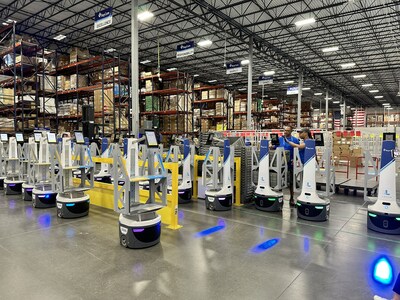
BayCare Integrated Service Center in Temple Terrace, Fla., recently implemented 25 state-of-the-art robots to innovate its supply distribution process.
BayCare said on Aug. 16 the robots will support its team members, improve accuracy filling orders, reduce physical demands for team members, and support “prompt and seamless care to the community.”
“Being in supply chain with BayCare for almost 30 years, I was thrilled to have the ability to implement robotics. It’s almost something that you could only dream of,” Victor Celiberti, BayCare’s supply chain director, said.
The company said the robots would be deployed in the “pick module area” at its 258,000-square foot distribution center that stocks everything the company needs to serve patients. In the pick module, team members walk through the aisles to gather supplies – from IV tubing and bags of solution to bedside pitchers and bedpans to personal protective equipment, surgical kits and more. Supplies are used to fill the approximately 12,000 daily orders supporting the company’s 16 hospitals, as well as its doctor’s offices, laboratories, ambulatory surgical centers and more across West Central Florida. Officials said the company’s unified distribution model has been instrumental in its ability to maximize purchasing efficiencies and managing its supply pipelines.
Before the introduction of the robots, BayCare said, order picking required team members to push carts weighing as much as 300 pounds up and down each aisle. Now, the company said, robots have replaced the carts and software helps to integrate the robots into the picking team. Orders are assigned to robots and displayed on a touchscreen for team members who meet the robots, pick the items and place the items in the robot’s totes. Once the item is selected and placed into the cart, the team member uses the touchscreen to tell the robot to move on to the next item’s location. When the order is complete, the robot is dismissed, and the team member prepares the order for shipping.
“The integration of robotics in our pick module area has been a game-changer for us,” Celiberti added. “We have seen a remarkable increase in productivity, which has helped offset some of the labor-related challenges we faced earlier. Our team members now feel more engaged and empowered in their roles.”